The latest evolution in Venture Electronics’ growing headphone portfolio is called the Venture Electronics Monk IE Biggie. It’s part of a set of two earphones, called the Biggie and Smalls, which share the same housing but differ in driver design. The Biggie is, as the name implies, the one with the “bigger” sound – it has larger soundstage and more bass.
As they belong to the Monk line (with IE meaning “in-ear”), the new earphones are affordable enough. They are quite different from the Monk Plus, though, and not just because they are in-ear headphones rather than earbuds: the sound signature is very different and they are meant to be used with different genres. These are not just Monk Plus “replicas” with an in-ear form factor; they stand on their own and offer a different approach to music.
Disclaimer: Lee kindly sent me a free sample to write this review. The Monk IE Biggie are available on veclan.com, though they are not sold to the wide public at the time of publishing.
TL;DR: recap
| Pros |
Cons |
| Removable cable with 2-pin standard connectors
Large number of eartips and three cables included Incredibly large soundstage |
Peculiar and dark sound signature that can be polarising
Requires you to forgo isolation to have balanced sound |
Rating: 7.8/10
Packaging & Accessories
As I received a prerelease product and a sample for the press, it did not include packaging. Units on sale include a wide variety of eartips and three different cables: one with microphone and remote, one SPC (silver-plated copper, the same cable used in the Monk Plus SPC and the Asura 2.0s) and one Espresso (a braided copper cable with cream and brown colours that may remind you of Italian espresso).
A few additional details can be found in my Headphones in Pictures article on the Monk IE.
Design & Comfort
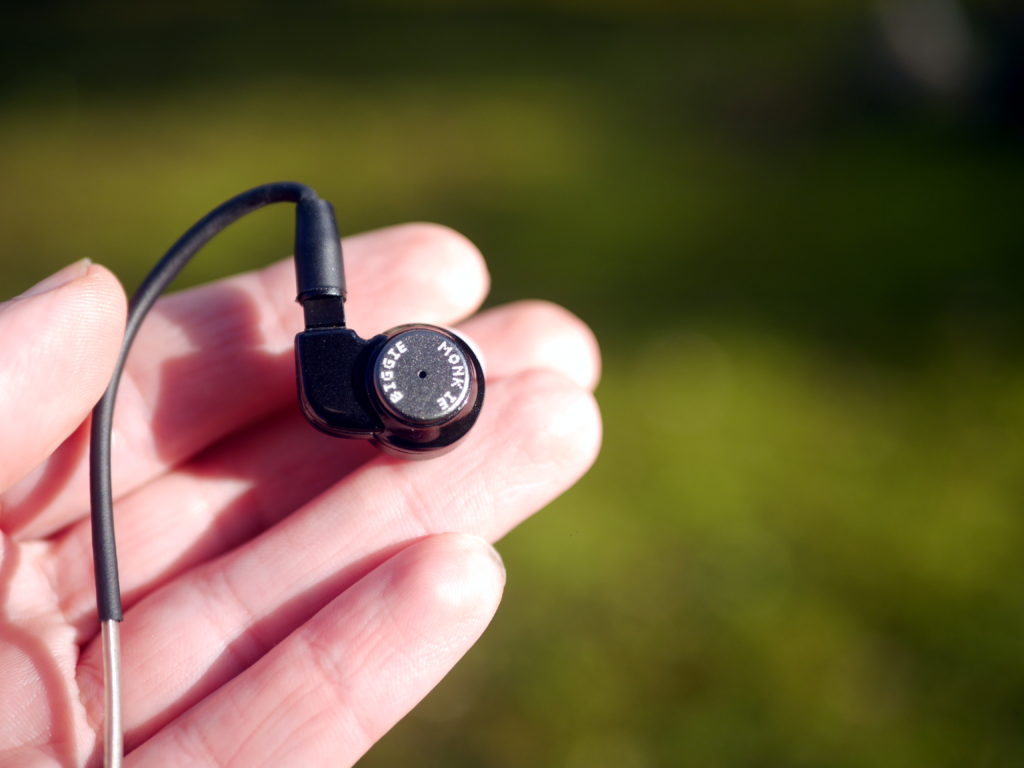
Despite their name associating them to the widely acclaimed Monk earbuds, the Monk IE are completely different from a design perspective. The housings are made of black plastic and they have a circular shape with a small block protruding from one side – that’s where the 2-pin connector is. There’s an aluminium disc on top of each housing with the name of the earphone engraved on it.
Their looks are as peculiar as their sound; they surely appear original and distance themselves from “classic” shapes such as those adopted by the Yinyoo IN-8, the Superlux HD381B or the Xiaomi Mi In-Ear Headphones Pro. This makes them immediately recognisable, as much as the classic earbud shape of the other VE products is instantly recognised.
Venture Electronics used glossy plastic to build the Monk IE Biggie and it seems they used high-quality materials. The earphones appear sturdy enough and even the pin receptacles appear durable, so I do not see large issues with construction popping up over the long term.
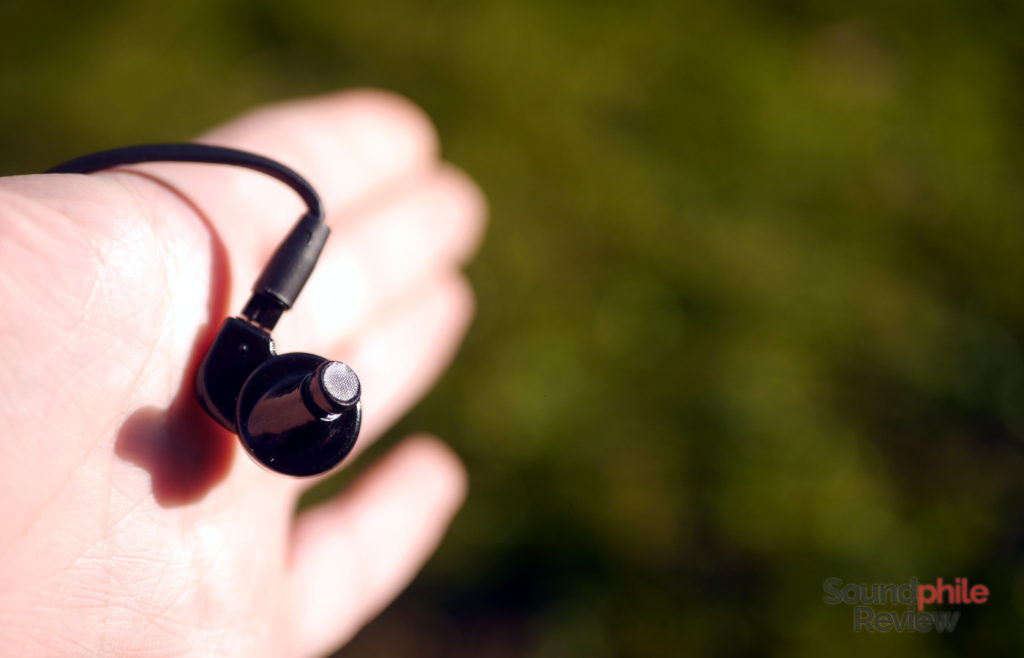
In terms of comfort, the Monk IE Biggie fare really well: I can wear them for a few hours before I feel the need to remove them and let my ears breathe. Their shape and size appears to be just perfect for me and the angle of the nozzle makes insertion effortless. As usual, I have to remind you that comfort is maybe the most subjective matter when talking about headphones, so take it with a pinch of salt.
When I first received the Venture Electronics Monk IE Biggie I tried them as I usually do with all in-ear headphones – I tried a few eartips to see which one offered the best seal, comfort and sound signature (as the tips do influence the sound). I normally use large tips and so I did this time. I tried them all, but no matter which I chose the headphones sounded boomy and muddy. I then had a fairly long chat with Lee to understand more about the headphones. He told me the Monk IE Biggie are designed in a way that one should choose a tip without perfect seal and also do not insert them too deep in the ear canal.
As a consequence, the Monk IE Biggie are not able to isolate the listener from the surroundings. If you are a quiet listener as I am, then you will find that these are not ideal for use on public transport or in other noisy environments, as you will need to crank up the volume on your source so that the music from the headphones is louder than the noise. I can’t speak for public transport in every country, but that could easily be tinnitus waiting to happen as even the subway (which is quieter than a bus) is fairly noisy here in Milan, Italy. Your mileage may vary, of course, but this is to say – don’t expect the Monk IE Biggie to be great at isolation, if you follow Lee’s advice.
To be more specific about my experience using the large tips, using foam tips – either the one included or Comply foam tips – results in mid-bass becoming overwhelming and taking over almost everything else. Given how the sound signature is already bass-centric and lacks air and sparkle at the top, the Biggies become almost claustrophobic in their presentation. Among isolating, large-sized tips I found the black silicone tips to be the best for me, as they provide sufficient isolation and good enough balance. White tips do not offer any kind of isolation and largely reduce bass as a consequence.
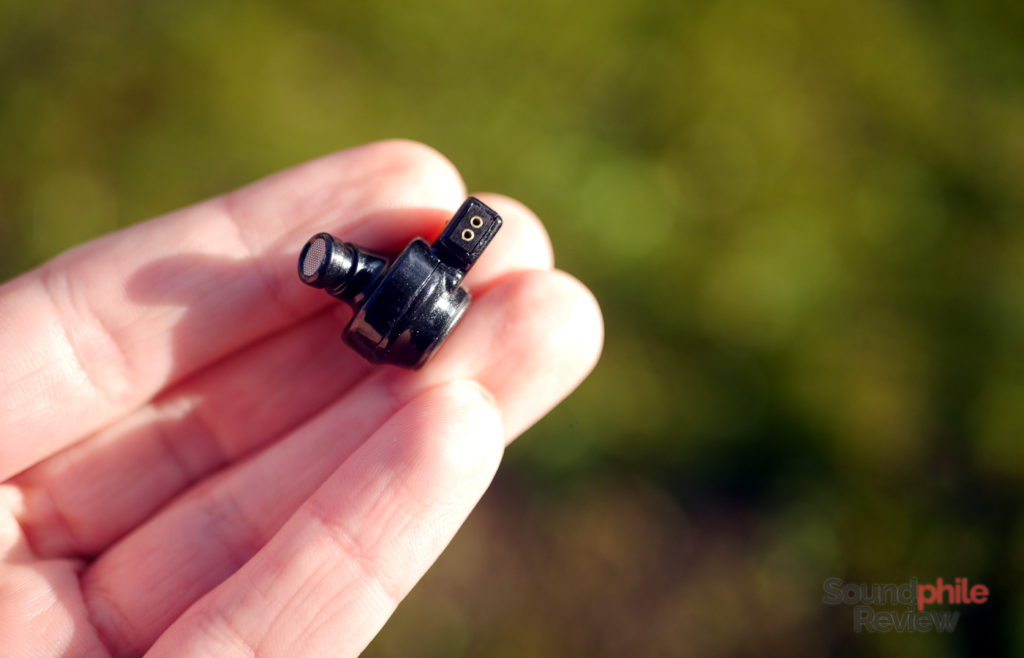
Now, following Lee’s directions I found that it is precisely the large white tips that are the best among those included, because they tame the bass a bit and leave enough space for the other frequencies. The thing is, the white tips offer no seal whatsoever to me, so the Monk IE Biggie basically turn to earbuds. That’s not bad per se, but not what I expected for sure!
Sound & Specs
I performed listening sessions using a Topping DX7 (both with single-ended and balanced outputs), a Little Dot MKIII SE (single-ended and balanced), a Head ‘n’ Hifi Objective2, a RHA Dacamp L1, a Zorloo ZuperDAC-S, a Cayin N5ii and an Aune M1s. Balanced output on the desktop amplifiers could be used thanks to a 2.5 mm TRRS to XLR4 adapter, as the cables provided by Venture Electronics have 2.5 mm balanced connectors. I also used the iFi IEMatch2.5.
Venture Electronics Monk IE Biggie
|
| Frequency response | 17 – 22,000 Hz |
| Impedance | 80 Ω |
| Sensitivity | 114 dB |
The Venture Electronics Monk IE Biggie are easy to drive thanks to both relatively low impedance and high sensitivity. The latter also reveals whether a source’s background is clean or not: as an example, I can distinctly hear a hiss when using the Topping DX7. Of course this has pros and cons. Due to the combination of low impedance and high sensitivity, it is easy to drive the Monk IE Biggie using any portable source, ranging from smartphones to DAPs to portable amplifiers.
The Venture Electronics Monk IE Biggie are unmistakably dark-sounding headphones. Even using relatively bright sources as the Little Dot MKIII SE can’t change this fact; the focus is on mid-bass and, as a consequence, they overshadow upper mids and highs. It’s especially treble that suffers from the bold presence of mid-bass, being very faint and distant. In this sense, the Monk IE Biggie are the exact opposite of the RHA CL1 Ceramic.
I am most surprised by the wide soundstage – despite the Monk IE Biggie being closed back, it has a soundstage so wide it rivals that of open back alternatives. Not only is it wide and decently deep, but it has great imaging, too, which makes it possible to pinpoint the exact position of the instrument.
The Venture Electronics Monk IE Biggie shine in the speed department – instruments that need fast transients to sound best such as drums, congas and other percussions are a pleasure to listen to. Santana’s first album is a delight! Beats are precise and feature a fast decay which really gives them a vivid and lifelike character.
Instrument separation is truly great and beyond what I would expect from $40 headphones. Due to the recessed nature of the mids and the consequent prominence of lower mids and mid-bass, I find it sometimes difficult to hear all the details at lower volume, but that becomes a lot easier when raising the volume a bit. The Monk IE Biggie are really volume dependent on this, much more than other headphones.
As I mentioned earlier, the Monk IE Biggie appear as dark sounding. That’s not because their bass is excessive – quite the contrary, in fact. Though I am not a person that likes warmer headphones, I appreciate the depth and body bass has. If it is more than what “neutral” should be, then it’s just a small amount – I find it is comparable, in terms of quantity, to the bass I hear on the HiFiMAN HE-560. There’s good impact and speed here; this leads to bass offering lots of detail and a fine texture.Though mid-bass is prevalent, the Monk IE Biggie are able to go deep
Alas mids are recessed, especially the upper-mids, which contributes substantially to the dark tone of the headphones. Whether it is voice, guitar or piano, they sound distant and recessed. The scene is dominated by lower mids, though they are not as much excessive as they are just more abundant. In other words, the problem is not that lower mids are bloated, but instead they are not as recessed. Tuning features (or issues, if you wish to look at it that way) aside, the Monk IE Biggie exhibit good behaviour in the mid spectrum: there’s a lot of detail going on, with good precision and ability to showcase instruments. I find the introduction to Jeff Buckley’s Eternal Life to be especially telling, as it is portrayed with great precision and accuracy despite being difficult to render correctly: the guitar acts fast and requires great control to unfold every stroke (something I learned back when I had to play it on my guitar: back then I had no fancy headphones to count on and reading the sheet music I could not wrap my head around the fact that I couldn’t hear the notes written there). The soundtrack for American Beauty is another good example of their capability – the instruments have an incredibly fast attack that make you really feel them.
All in all, the mids are enjoyable as they show how technically capable the Monk IE Biggie are. Venture Electronics did a great job with this driver and I see a lot of potential with some tuning to make them more neutral – something that Lee seems not especially inclined to, judging from our chatting on the matter. Luckily, the Monk IE Biggie can be easily equalised – back on that in a few paragraphs – and this also shows the malleability of the drivers.
Treble is heavily recessed and very distant in the mix. Even in tracks where it sounds in the forefront it seems like it is confined to the background. Extension is good, but the fact that it is barely audible beyond 10 kHz makes this point kind of moot. There’s also good detail to be found, though it’s barely shown. Even using the Little Dot MKIII SE only does so much in helping treble emerge; it’s a bit buried behind everything else and that’s part of the reason the Monk IE Biggie sound dark. When using a bit of equalisation it is apparent that it’s got great quality – it’s fast, precise, accurate, refined and so natural in its presentation – but all of this is not displayed with the default tuning.
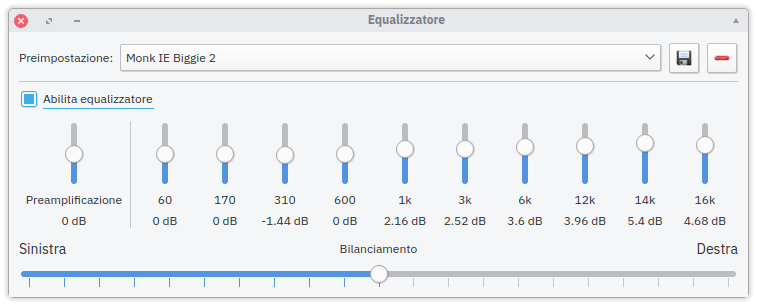
Usually I am not an equaliser person; I actually never use equalisers as I like to hear the different tunings of headphones I try. Despite that, I found myself to be comfortable using an equaliser to make the Venture Electronics Monk IE Biggie a bit brighter and to bring their treble to life. Using the tuning shown above I could hear a much more neutral tone and an overall balanced tuning that made the sound more lifelike and agreeable. As always, tuning is subject to both taste and personal perception, so your mileage may vary. Anyway, the Monk IE Biggie respond very well to equalisation – you can try and see what you like.
I cannot tell which genres are best suited for listening on the Monk IE Biggie; their peculiar sound signature could theoretically work with acoustic genres, though it really depends on the track.
I have to say that comparing the Monk IE Biggie to other in-ear headphones is quite difficult – there’s no other IEM I own that has a similar sound signature. Here are my picks:
- Monk IE Smalls: the other side of the Monk IE coin is definitely brighter and more akin to a “traditional” IEM. They have better balance overall and feel – at least to my ears – more natural. The Biggie seem to reach deeeper, but their treble is conversely less extended. Mids are also much more prominent on the Smalls and this affords them a better sense of consistency. Though their soundstage is relatively large, it is no match for the Biggie’s. They are rather different in character and target different audiences.
- KZ ZS6: the KZ ZS6 is extremely distant from the Monk IE Biggie. Soundstage is more intimate and instrument separation is better on the ZS6, but in terms of sound signature they are incredibly different. The ZS6 is V-shaped, though balanced enough in its approach, and lends a heavy focus on treble. The presentation is generally more “in your face” and this makes it somewhat bolder. The Biggie are more subtle and refined, but also easier on the ears.
- HiFiMAN RE-00: in a sense, the Monk IE Biggie and the RE-00 have an opposite approach to sound. RE-00’s bass is shy and shallow, with mids taking the front of the scene and treble being just behind it. The Biggie, on the other hand, privilege bass and leave everything else behind. In terms of technical qualities, however, the Biggie are way better – they are much clearer, have better instrument separation and greater attention to detail. The RE-00 appear muddy and dull in comparison.
Final Thoughts
Lee pictures the Monk IE Biggie as Venture Electronics’ signature in-ear headphones – this is the sound they wanted to achieve and what they’re proud of. This is what in-ear headphones should sound like according to them. When they announced the Monk IE Biggie, Lee only wanted few people to try them and stressed they were peculiar and needed time to be understood. He said these are not your average in-ear headphones.
In more than a sense, he was right and I can see why he is still limiting the Biggie’s sales. They are extremely peculiar and they’re not for everyone. I disagree with Lee when he says this is how headphones should sound like and that most IEMs sound too bright, but that’s fine – in the end, audio is a very personal experience and everyone is entitled to their own opinion. What’s important to note is that the Biggie is aimed at a niche audience who likes this sound signature.
What I want to stress is the fact that we’re not talking about a wrong sound signature – it’s not like the Yinyoo IN-8 whose mid-bass is bloated and ends up sounding inaccurate and just wrong; we’re talking about deliberate choices in shaping the sound signature. And this makes all the difference.
Technically speaking, the Monk IE Biggie are very capable and show attention to detail, a wider soundstage than most closed IEMs, and coherent sound. Considering the $40 price tag, they are well worth a try as they show a technical prowess well beyond what their price would suggest – they are at least on par with the RHA MA750i that retail for double or thrice the price. If you want to try them, just be aware that these are not the average IEMs. Far from it. Whether that’s good or not, it’s up to you!
The Venture Electronics Monk IE Biggie currently retail for $40, though their availability is limited.

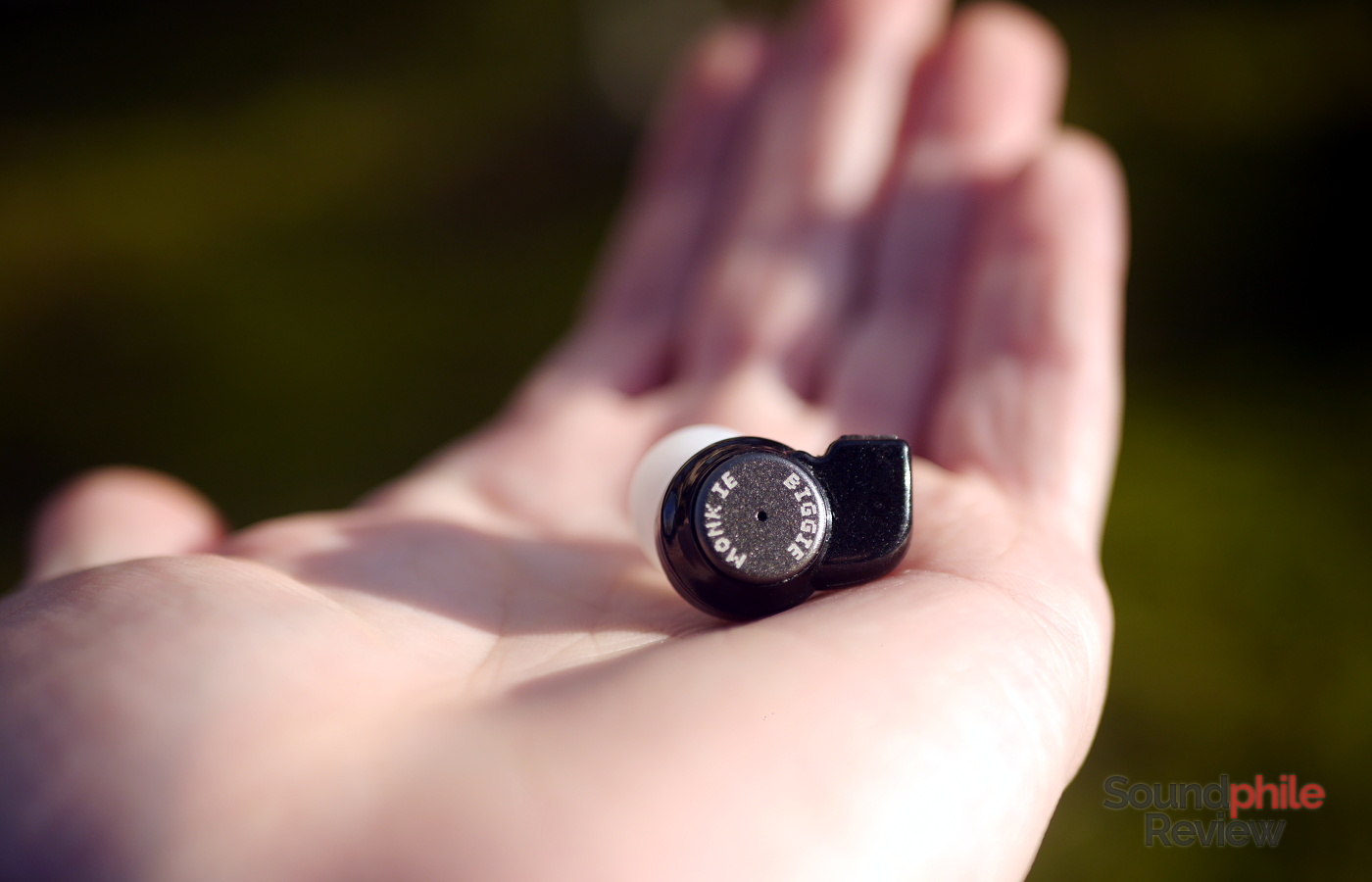

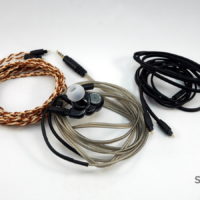
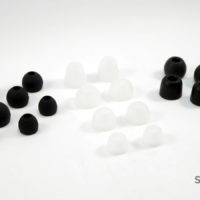


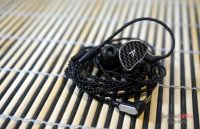
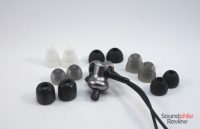


This review has definitely opened my curiosity about and interest in giving VE’s Biggie a listen. I own their Expresso which seems very different from the model here under review.
Anyway, thank you for such an interesting review. As a result, I am likely to purchase and attempt to appreciate this unusual design Lee has on offer.
Thank you for writing this review. I wanted to buy Biggie’s because I already love the sound of VE Monk plus. I was little curious how they might sound like and your review gave me a clear picture about it. I think I will like it very much because I also like kz zs1 sound signature. It wasn’t for everyone but perfect for high’s sensitive people like me. I like dark sound signature because for some reason the female vocals seems very intimate to me in those headphones.
“Absolute mud and congestion. Could work as a subwoofer since it barely plays anything above 500Hz anyways.” Grade F
Crinacle.